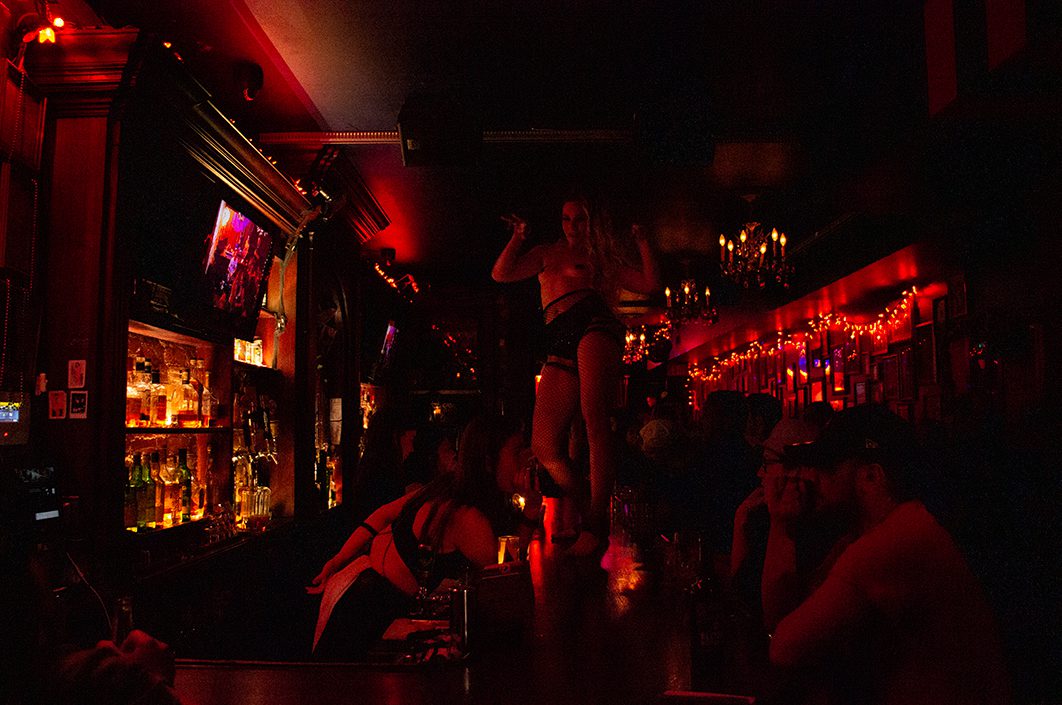Lounging in the backroom of the Painted Lady, red light beaming down on her sweat-soaked skin, Rosie Hunty, 27, speaks about her love of burlesque.
“If you had asked me 10 years ago if I ever expected to love … hell, even like myself, I would have laughed in your face,” she says.
“Since becoming a burlesque dancer, I can now say that I am practically obsessed with myself.”
With her journey of self acceptance, Hunty is an example of the power burlesque dancing can have on personal liberation.

“I turned from an ugly duckling into a beautiful swan.”
-Rosie Hunty
Originating in the 17th century as a comedic art form, burlesque has evolved into a form of self-expression that often involves a variety show format and strip teases on stage. Toronto is a hub for performers. Bars and clubs host events almost every night of the week, classes are taught all over the city and touring festivals regularly visit.
“It’s all about empowerment — reclaiming the body, promoting body positivity… gaining control of ourselves in a world that craves nothing more than to do it for us,” Hunty says.
Hunty says that 4 a.m. is her favourite time to perform because she finds it to be the most comfortable.
“It gives me the comfort of sameness … the same clients, the same drinks,” says Hunty. “There’s a mystery about it too. It keeps it interesting, it makes things fun … it keeps people coming back for more.”
Starting as a dancer from a young age, Hunty found herself turning to burlesque as an escape from her life.
“I was bullied, both by peers and family members,” she says. “I found myself spiralling into a deep, dark depression. I really hated myself. I had always loved to dance. A friend of mine brought me to my first burlesque show on my 18th birthday. I was hooked immediately.”
That friend is Svetlana Konswallow, 28, who is now a fellow dancer at the Painted Lady, a “cheeky saloon” at Ossington Avenue and Dundas Street West.
Konswallow said for her, burlesque is “a creative outlet and a good time.”
Starting as a burlesque dancer, she now teaches and organizes classes through Burlesque Uni in Toronto, one of the largest burlesque schools in Canada.
“It is so rewarding getting to watch our students experience their bodies in a new way … to get to witness them unlocking a new part of their sexuality is magical,” she said.
Hunty quickly enrolled in classes herself.
“Not to be cliché, but I turned from an ugly duckling into a beautiful swan,” she said.
“The place I feel most powerful is on the stage, but that power has translated into other parts of my life too. It has given me a sense of self worth.”
Longtime burlesque instructor Knox Harter describes burlesque as freedom.
“After more than 15 years of teaching, I say with confidence: there is nobody who can’t burlesque,” says Harter, who holds a bachelor’s degree in performative dance.
“Unlike other technique-based forms, burlesque is solely about feeling. Moving your body the way that feels right. That feels freeing.”
Back at the Painted Lady, Hunty says there are no real constructs when it comes to burlesque.
“We play with and mess up the ordinary. We celebrate ourselves and our bodies for what they are — not what we have been socially constructed to be,” she says. “The only sexuality that exists is your own.”
Hunty says that she would tell her 18 year-old self that “all the hell she went through brought her to a beautiful life.”
“I get to do something I love for a living, and get to watch other dancers love themselves wholeheartedly is the most beautiful thing in the world.”
Check out more Toronto at 4 a.m. content here!
Online: Toronto Observer
Instagram: @6ix_at_4
Twitter: @6ix_at_4

